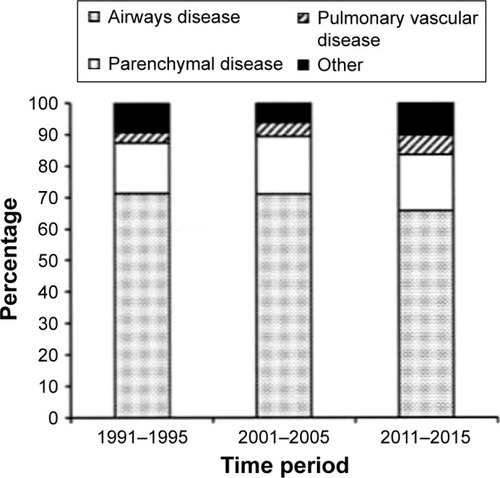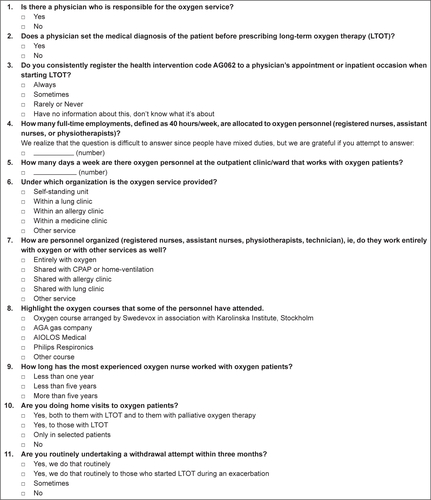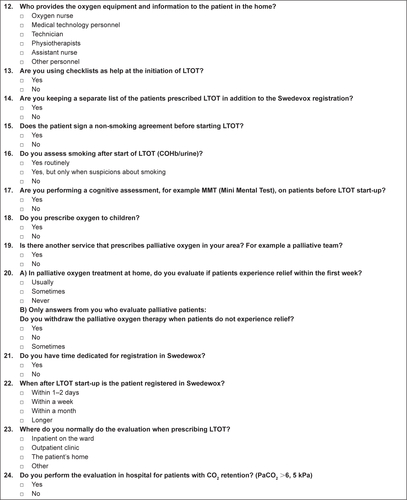Figures & data
Table 1 The national structure of LTOT in Sweden
Figure 1 Primary physician-diagnosed cause for starting LTOT.
Abbreviation: LTOT, long-term oxygen therapy.

Table 2 Quality of LTOT in Sweden in 2015
Figure 2 Mean PaO2 on room air (±2 SD) (A) and mean PaO2 on oxygen (±2 SD) (B).
Abbreviations: PaO2 (air), arterial blood gas tension of oxygen on air; SD, standard deviation; PaO2 (oxygen), arterial blood gas tension of oxygen on oxygen; LTOT, long-term oxygen therapy.

Figure 3 Percentage fulfilling criteria for LTOT prescription, oxygen delivery mode, and reevaluation of treatment (A) and percentage fulfilling quality criteria for LTOT (B).
Abbreviation: LTOT, long-term oxygen therapy.

Figure S1 English translation of the web-based questionnaire from 2014.
Note: Intervention code AG062: this is a health code that refers to start of oxygen treatment.
Abbreviations: LTOT, long-term oxygen therapy; PaCO2, partial pressure of arterial carbon dioxide.



Table S1 Variables in Swedevox registry
